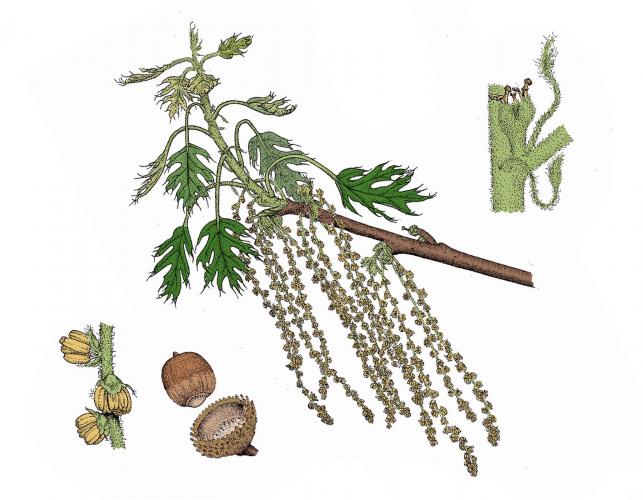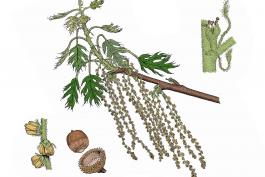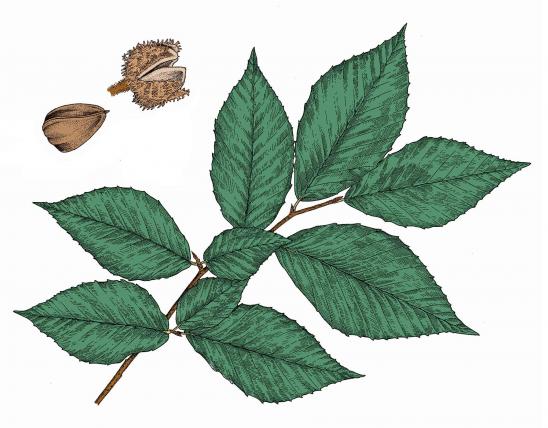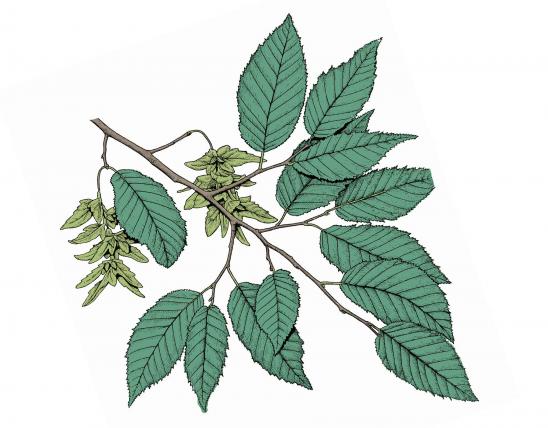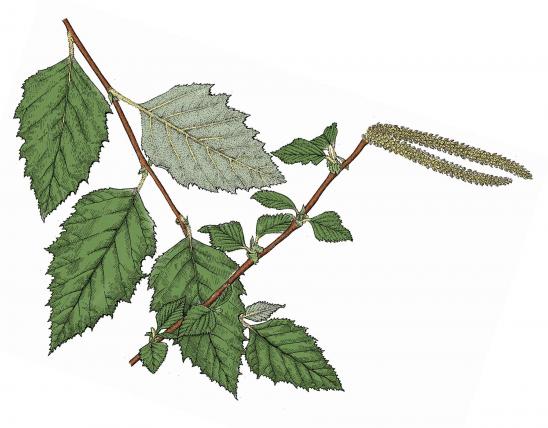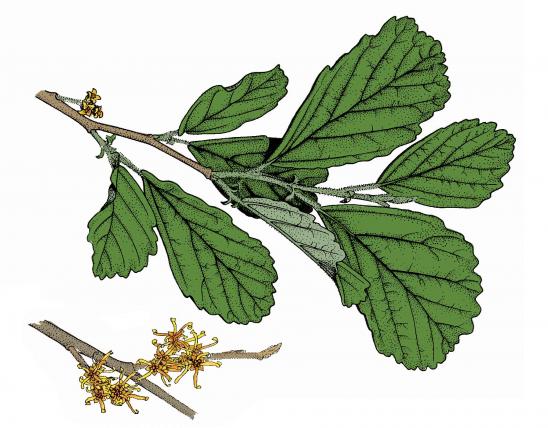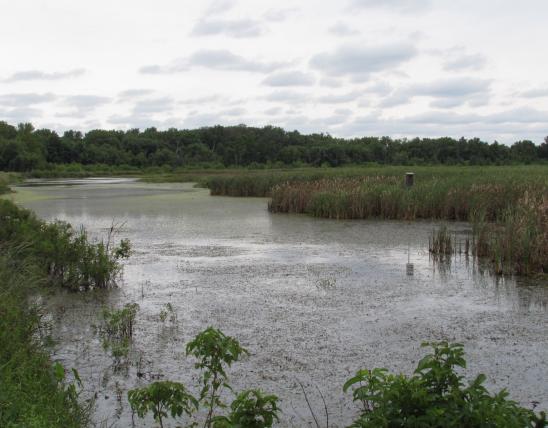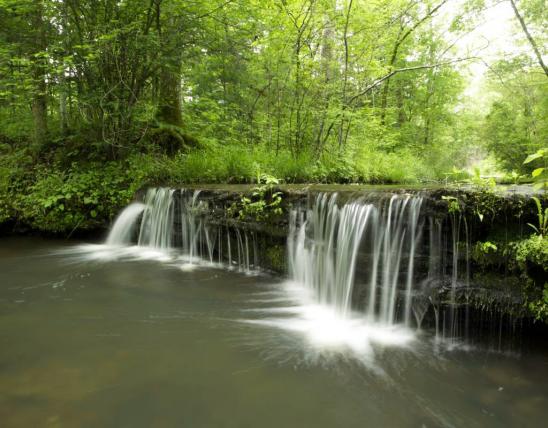
Swamp white oak is a medium-sized tree with an open, irregular, rounded crown, ascending upper branches, and pendulous lower branches.
Leaves are alternate, simple, 4–7 inches long, widest above the middle; margin with lobes or large, rounded teeth, or both, some of the side veins not ending in teeth; upper surface dark green, shiny; lower surface downy-whitish.
Bark is brownish; gray to dark brown with age; grooves deep, ridges broad, flattened, and loosely curling at the ends, appearing rough; bark on larger branches often peeling.
Twigs are stout, short, reddish-brown, smooth; older twigs with peeling bark.
Flowers April–May, in catkins.
Fruits September–October, acorns ¾–2½ inches long, in clusters of 1–3, on slender, dark stalks about 2½ inches long; nut light brown, about uniformly wide, about 1 inch long, tip pointed, hairy; cup covering to ½ the nut, light brown, with fine, woolly hair; scales flattened, sometimes with a short fringe on the border; seeds edible; ripen in the first year.

Habitat and Conservation
Status
Human Connections
Ecosystem Connections



